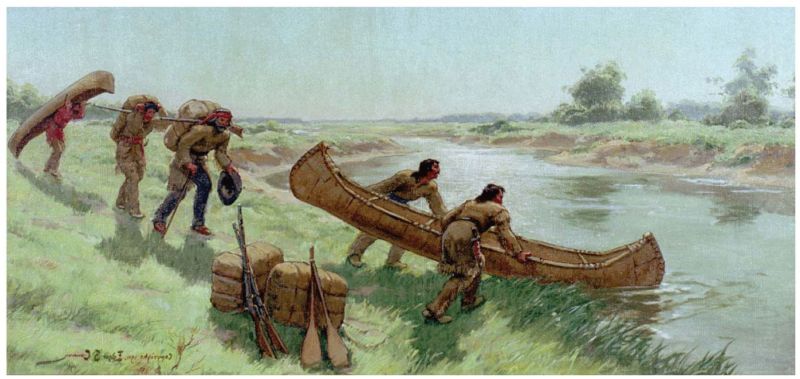The Chicago Portage archive is available for download as a single .zip file from here. The archive includes copies of The Chicago Portage Ledger, photographs of the site, and the video "Connected Worlds: The Story of the Chicago Portage.
Furthermore, this December, we are launching a new platform for our unique digital collections.
Please take a moment to preview it and let us know what you think!
The English in Chicago
“This Great Lake also they Coasted till they came near the South west end of it, and then carried their cannoos over land a full League to a Branch of the River Ilinois, and this was their biggest carrying place of the whole Voyage, and is called Chigaquea.”
- description of the Chicago portage in the spring of 1711 by Joseph Kellogg
Long before DuSable lived by the mouth of the Chicago River, Joseph Kellogg was the first English born traveler who passed over the Chicago Portage and described it. He was twenty years old and one of six Canadian voyageurs who were taking their chances with the Fox Indians by passing through the Illinois Country when the Fox were beginning their forty year long war with the French. While he described the land, vegetation, and game around the Chicago portage, he mentioned no residents.
From the time of the French and the Fox Wars, until the beginning of the French and Indian War, only one other Englishman is recorded as having passed through Chicago. James Logan was surveying French trade routes to the west in 1718 when he noted only the ruins of an old (probably French) fort.
Three years after Point de Sable left Chicago for Missouri, and shortly after Fort Dearborn’s construction was completed, the first English-speaking resident arrived. In 1803 the silversmith and trader, John Kinzie bought Point de Sable`s old trading house, home and farm buildings from Jean Lalime and brought his family to the small estate the following year.
Next page: John Kinzie




